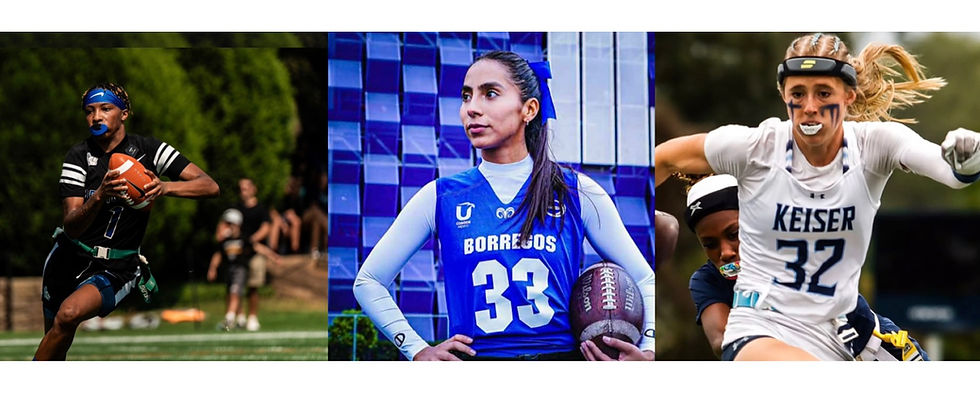The Collapse of Amateurism in the NIL Era
- Sade Frazier
- May 15
- 4 min read

The NCAA’s transfer portal was created to give student-athletes greater autonomy, the freedom to explore new opportunities and make decisions that align with their academic and athletic goals. For high school prospects, the recruiting process similarly aimed to empower athletes to choose the best path for their future. Name, Image, and Likeness (NIL) reforms were intended to complement this freedom, finally allowing athletes to be compensated for the value they bring to their schools and communities.
However, what began as a framework for empowerment and fair compensation has quickly morphed into something far more complicated: a quasi-pay-for-play system where inducements masquerade as endorsements and recruiting has escalated into an arms race funded by third-party NIL collectives.
The Rise of NIL Collectives: A Legal Gray Zone
These third-party NIL collectives are donor-funded groups that pool money to support athletes at specific schools.[1] These collectives have become powerful players in the transfer process. Functioning as intermediaries between schools and athletes, many collectives now offer upfront guarantees of NIL compensation as a condition of transferring or enrolling, echoing the salary negotiations of professional sports.
This raises a critical question: if NIL deals are structured to induce athletes to enroll or transfer to specific schools, are we witnessing a covert violation of amateurism or its outright collapse?
Case Study: Jaden Rashada and the NIL Fallout
No case better illustrates this murky legal area than that of Jaden Rashada, a highly touted high school quarterback. In late 2022, Rashada reportedly signed an NIL deal with a Florida-based collective valued at $13.85 million, contingent upon his enrollment at the University of Florida.[2]
When the collective failed to deliver on its financial promises, the deal unraveled. Rashada decommitted from Florida and ultimately enrolled at Arizona State.[3] The fallout from this agreement exposed the transactional nature of many NIL deals and the risks inherent in unregulated, donor-driven collectives.
While no NCAA violations were officially alleged, the saga sparked widespread debate over whether NIL has turned recruiting into open bidding wars, challenging the NCAA’s guidelines. Rashada’s experience highlights the fragile position of young athletes promised life-changing sums, only to find themselves entangled in contractual disputes and legal ambiguity before ever stepping foot on the field.
The NCAA’s Enforcement Challenges
The NCAA maintains that NIL compensation must not be used as a recruiting inducement or tied directly to athletic performance.[4] Under NCAA guidelines, NIL agreements must be for legitimate services, such as endorsements, social media promotions, or public appearances.[5] Compensation cannot be contingent on committing to a specific school, nor can schools or collectives directly guarantee NIL deals for recruits or transfers.[6]
Yet, in practice, these rules have proven nearly impossible to enforce. Universities enjoy plausible deniability, as collectives operate independently on paper, even while advancing the schools' interests. High school prospects and transfer portal athletes are swiftly contacted by collectives tied formally or informally to prospective programs. These collectives often offer six- or seven-figure deals, contingent on enrollment or transfer decisions.
As a result, while schools claim separation from the process, collectives continue to exploit the gap between NCAA policy and practical reality.
Legal Exposure and Future Litigation Risks
As the NIL marketplace grows, the blurred line between permissible activity and impermissible inducements is drawing increased legal and regulatory scrutiny. While the NCAA has stepped up enforcement, courts have frequently ruled against restrictions on athlete compensation, citing antitrust concerns, most notably in NCAA v. Alston,[7] where the Supreme Court unanimously found the NCAA’s limits on education-related benefits to be unlawful.
More litigation is inevitable. Some state legislatures have passed laws allowing schools to play a more active role in NIL deals, directly conflicting with NCAA regulations.[8] Federal intervention also looms, with multiple proposed bills aiming to establish a national standard for NIL governance.
For universities, collectives, and athletes alike, the legal landscape remains unsettled. Without clearer guardrails, whether through NCAA reform, state law harmonization, or federal regulation, the quasi-professional model of college sports will continue to evolve in unpredictable ways.
The Future of Amateurism
The convergence of the transfer portal, NIL opportunities, and the growing influence of collectives has transformed recruiting and transfers into a full-blown competitive marketplace. What started as an effort to enhance athlete autonomy has inadvertently accelerated the erosion of amateurism and upended the collegiate sports model.
Unless the NCAA and lawmakers can reconcile athlete compensation with the preservation of competitive integrity, the line between college and professional sports will continue to blur, perhaps irreversibly.
Sade Frazier is an attorney and Sports Lawyers Association NextGen Committee member, passionate about how NIL, IP, tech, and media are shaping the future of sports law. Learn more at www.linkedin.com/in/sadefrazier.
Sources:
[1] Pete Nakos, What are NIL Collectives and How Do They Operate?, On3 (July 6, 2022), https://www.on3.com/nil/news/what-are-nil-collectives-and-how-do-they-operate/.
[2] Thomas Hunt & Kyle Stroup, A $13.85 Million NIL Deal Gone Wrong: Jaden Rashada Sues University of Florida, JD Supra (June 26, 2024), https://www.jdsupra.com/legalnews/a-13-85-million-nil-deal-gone-wrong-4508505/#:~:text=The%20Recruitment%20and%20NIL%20Agreement,remaining%20$13.35%20million%20to%20follow.
[3] Id.
[4] Twane Duckworth and Mike Williams, Understanding NIL Rights for College Athletes, WTW (Dec. 20, 2024), https://www.wtwco.com/en-us/insights/2024/12/understanding-nil-rights-for-college-athletes.
[5] Id.
[6] Id.
[7] Nat’l Collegiate Athletic Ass’n v. Alston, 594 U.S. 1 (2021).
[8] NIL College Rules, On3, https://www.on3.com/nil/laws/college/ (last visited Apr. 16, 2025).







MM88 MM88
Go88 Go88
kuwin kuwin
MM88 MM88
iwin iwin
J88 J88
MM88 MM88
Go88 Go88
kuwin kuwin
MM88 MM88
iwin iwin
J88 J88
MM88 MM88
Go88 Go88
kuwin kuwin
MM88 MM88
iwin iwin
J88 J88
MM88 MM88
Go88 Go88
kuwin kuwin
MM88 MM88
iwin iwin
J88 J88
MM88 MM88
Go88 Go88
kuwin kuwin
MM88 MM88
iwin iwin
J88 J88